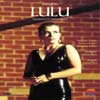Berg Lulu at Glyndebourne
View record and artist detailsRecord and Artist Details
Composer or Director: Alban Berg
Genre:
Opera
Label: NVC Arts
Magazine Review Date: 3/1997
Media Format: Video
Media Runtime: 182
Mastering:
Stereo
Catalogue Number: 0630-15533-3

Tracks:
| Composition | Artist Credit |
|---|---|
| Lulu |
Alban Berg, Composer
Alban Berg, Composer Andrew Davis, Conductor Christine Schäfer, Lulu, Soprano David Kuebler, Alwa, Tenor Donald Maxwell, Animal tamer; Athlete, Baritone Graham Vick, Wrestling Bradford Humphrey Burton, Wrestling Bradford Jonathan Veira, Professor of Medicine; Banker; Theatre Manager, Baritone Kathryn Harries, Countess Geschwitz, Soprano London Philharmonic Orchestra Neil Jenkins, Prince; Manservant; Marquis, Tenor Norman Bailey, Schigolch, Baritone Patricia Bardon, Dresser; High-School Boy; Groom, Soprano Stephan Drakulich, Painter; Negro Wolfgang Schöne, Dr Schön; Jack the Ripper, Baritone |
Author: Alan Blyth
Glyndebourne’s new theatre has allowed the Festival to spread its wings. One of its most daring choices was last summer’s Lulu. In Graham Vick’s staging the single set consisted of a curved red-brick wall that looked like an extension of the theatre’s own architecture, the idea surely being to draw the audience into the drama, make the wealthy share the experience of the deprived. Its drawback is that the various milieux predicated by the libretto – Vienna studio, artist’s salon, theatre dressing-room, Paris gaming-room and London attic – all look the same. However ingenious the lighting may be, that is something of a disadvantage and tends towards visual monotony.
It forms a suitable enough backdrop to Vick’s seemingly disengaged attitude to the piece itself. His cool, objective gaze on the characters also detaches us from their predicaments, thus making the work seem even more sleazy than it already is. Of course there may be a case to be made for such a clear-eyed, unsentimental view of Berg’s second and last opera, emphasizing the single-minded self-interest of all the characters apart from the lesbian Geschwitz.
Paradoxically one does in the end find some sympathy for Lulu herself as portrayed by Schafer, more so here on video than in the opera house, because we more intimately share her feelings as a victim of her own inner erotic yearnings, irresistible to all men, herself drawn to them all in spite of herself. Schafer conveys this in her body language, even more in her facial expressions portraying her sheer vulnerability. Unlike many previous Lulus, Silja perhaps excepted, Schafer, being herself young and attractive, doesn’t have to engage in the vamping we so often see in the part from older sopranos: her allure is there in her person. All she has to do is ‘be’. Similarly, unlike most of her predecessors, she sings the role with apparently effortless ease, also with an accuracy that is truly astonishing. Nor does any sign of wobble or strain affect her tone. It is a compelling portrayal, beautifully caught by Burton in his video direction.
Schone’s strongly sung, worried Dr Schon, slave to Lulu, and his frighteningly mad Jack the Ripper, Kuebler’s intense Alwa (made up, deliberately, to look like Berg, who had a secret mistress), Bailey’s wheezy, crafty Schigolch, Harries’s eloquent Geschwitz are leaders of an excellent ensemble, conducted by Davis with total conviction: the score has never sounded so translucent yet so rich-hued. In terms of both picture and sound this video is faithful to the original in which Vick’s command of stagecraft is everywhere evident but never obtrusive. Subtitles are provided and the booklet has a good essay on the opera by Mark Pappenheim.'
It forms a suitable enough backdrop to Vick’s seemingly disengaged attitude to the piece itself. His cool, objective gaze on the characters also detaches us from their predicaments, thus making the work seem even more sleazy than it already is. Of course there may be a case to be made for such a clear-eyed, unsentimental view of Berg’s second and last opera, emphasizing the single-minded self-interest of all the characters apart from the lesbian Geschwitz.
Paradoxically one does in the end find some sympathy for Lulu herself as portrayed by Schafer, more so here on video than in the opera house, because we more intimately share her feelings as a victim of her own inner erotic yearnings, irresistible to all men, herself drawn to them all in spite of herself. Schafer conveys this in her body language, even more in her facial expressions portraying her sheer vulnerability. Unlike many previous Lulus, Silja perhaps excepted, Schafer, being herself young and attractive, doesn’t have to engage in the vamping we so often see in the part from older sopranos: her allure is there in her person. All she has to do is ‘be’. Similarly, unlike most of her predecessors, she sings the role with apparently effortless ease, also with an accuracy that is truly astonishing. Nor does any sign of wobble or strain affect her tone. It is a compelling portrayal, beautifully caught by Burton in his video direction.
Schone’s strongly sung, worried Dr Schon, slave to Lulu, and his frighteningly mad Jack the Ripper, Kuebler’s intense Alwa (made up, deliberately, to look like Berg, who had a secret mistress), Bailey’s wheezy, crafty Schigolch, Harries’s eloquent Geschwitz are leaders of an excellent ensemble, conducted by Davis with total conviction: the score has never sounded so translucent yet so rich-hued. In terms of both picture and sound this video is faithful to the original in which Vick’s command of stagecraft is everywhere evident but never obtrusive. Subtitles are provided and the booklet has a good essay on the opera by Mark Pappenheim.'
Discover the world's largest classical music catalogue with Presto Music.

Gramophone Digital Club
- Digital Edition
- Digital Archive
- Reviews Database
- Full website access
From £8.75 / month
Subscribe
Gramophone Full Club
- Print Edition
- Digital Edition
- Digital Archive
- Reviews Database
- Full website access
From £11.00 / month
Subscribe
If you are a library, university or other organisation that would be interested in an institutional subscription to Gramophone please click here for further information.




